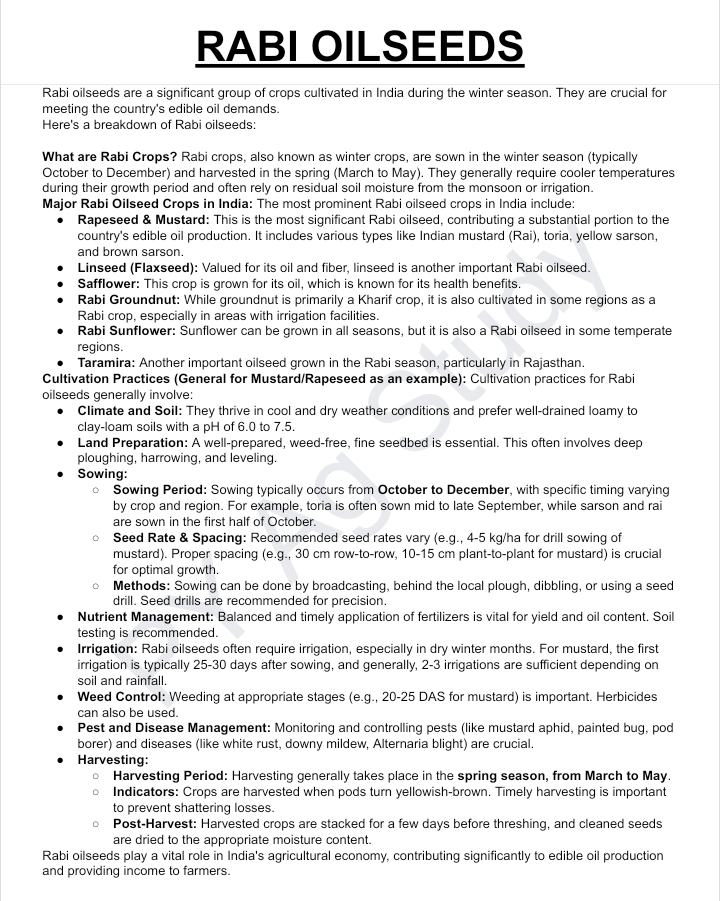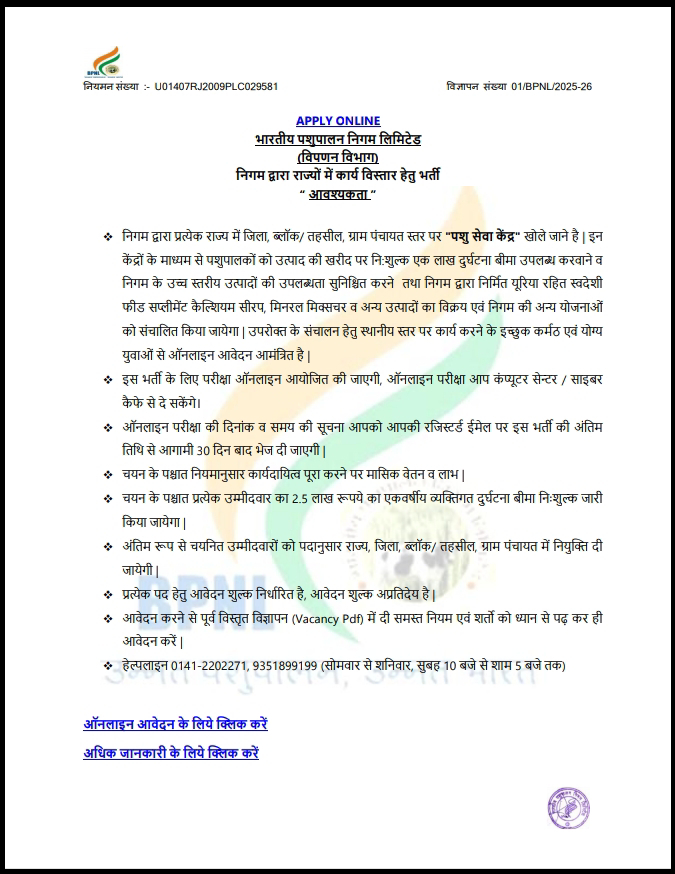Rabi oilseeds are a significant group of crops cultivated in India during the winter season. They are crucial for meeting the country's edible oil demands.
Here's a breakdown of Rabi oilseeds:
What are Rabi Crops? Rabi crops, also known as winter crops, are sown in the winter season (typically October to December) and harvested in the spring (March to May). They generally require cooler temperatures during their growth period and often rely on residual soil moisture from the monsoon or irrigation.
Major Rabi Oilseed Crops in India: The most prominent Rabi oilseed crops in India include:
Rapeseed & Mustard: This is the most significant Rabi oilseed, contributing a substantial portion to the country's edible oil production. It includes various types like Indian mustard (Rai), toria, yellow sarson, and brown sarson.
Linseed (Flaxseed): Valued for its oil and fiber, linseed is another important Rabi oilseed.
Safflower: This crop is grown for its oil, which is known for its health benefits.
Rabi Groundnut: While groundnut is primarily a Kharif crop, it is also cultivated in some regions as a Rabi crop, especially in areas with irrigation facilities.
Rabi Sunflower: Sunflower can be grown in all seasons, but it is also a Rabi oilseed in some temperate regions.
Taramira: Another important oilseed grown in the Rabi season, particularly in Rajasthan.
Cultivation Practices (General for Mustard/Rapeseed as an example): Cultivation practices for Rabi oilseeds generally involve:
Climate and Soil: They thrive in cool and dry weather conditions and prefer well-drained loamy to clay-loam soils with a pH of 6.0 to 7.5.
Land Preparation: A well-prepared, weed-free, fine seedbed is essential. This often involves deep ploughing, harrowing, and leveling.
Sowing:
Sowing Period: Sowing typically occurs from October to December, with specific timing varying by crop and region. For example, toria is often sown mid to late September, while sarson and rai are sown in the first half of October.
Seed Rate & Spacing: Recommended seed rates vary (e.g., 4-5 kg/ha for drill sowing of mustard). Proper spacing (e.g., 30 cm row-to-row, 10-15 cm plant-to-plant for mustard) is crucial for optimal growth.
Methods: Sowing can be done by broadcasting, behind the local plough, dibbling, or using a seed drill. Seed drills are recommended for precision.
Nutrient Management: Balanced and timely application of fertilizers is vital for yield and oil content. Soil testing is recommended.
Irrigation: Rabi oilseeds often require irrigation, especially in dry winter months. For mustard, the first irrigation is typically 25-30 days after sowing, and generally, 2-3 irrigations are sufficient depending on soil and rainfall.
Weed Control: Weeding at appropriate stages (e.g., 20-25 DAS for mustard) is important. Herbicides can also be used.
Pest and Disease Management: Monitoring and controlling pests (like mustard aphid, painted bug, pod borer) and diseases (like white rust, downy mildew, Alternaria blight) are crucial.
Harvesting:
Harvesting Period: Harvesting generally takes place in the spring season, from March to May.
Indicators: Crops are harvested when pods turn yellowish-brown. Timely harvesting is important to prevent shattering losses.
Post-Harvest: Harvested crops are stacked for a few days before threshing, and cleaned seeds are dried to the appropriate moisture content.
Rabi oilseeds play a vital role in India's agricultural economy, contributing significantly to edible oil production and providing income to farmers.








